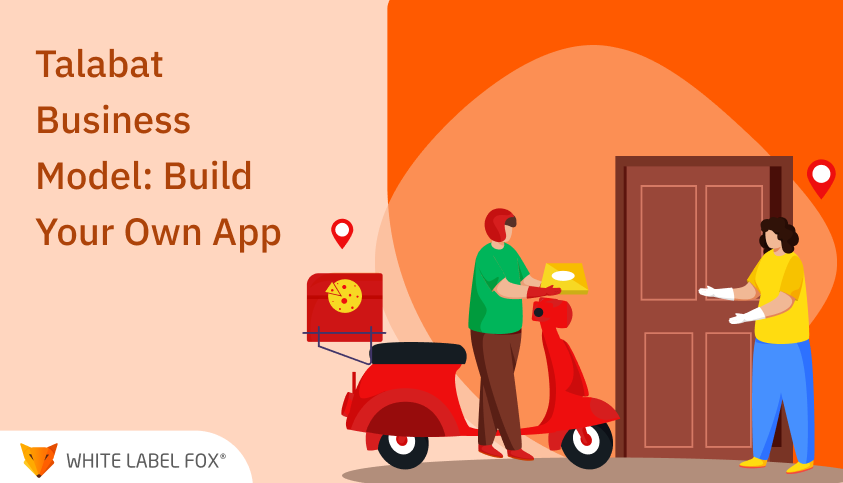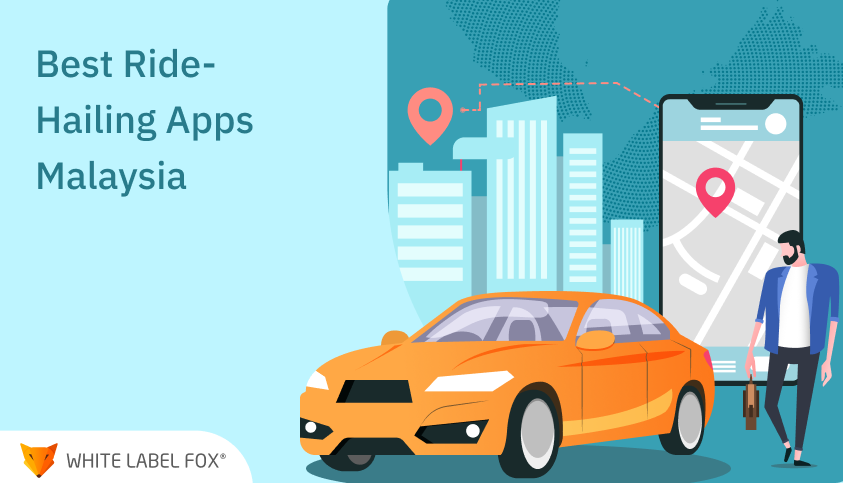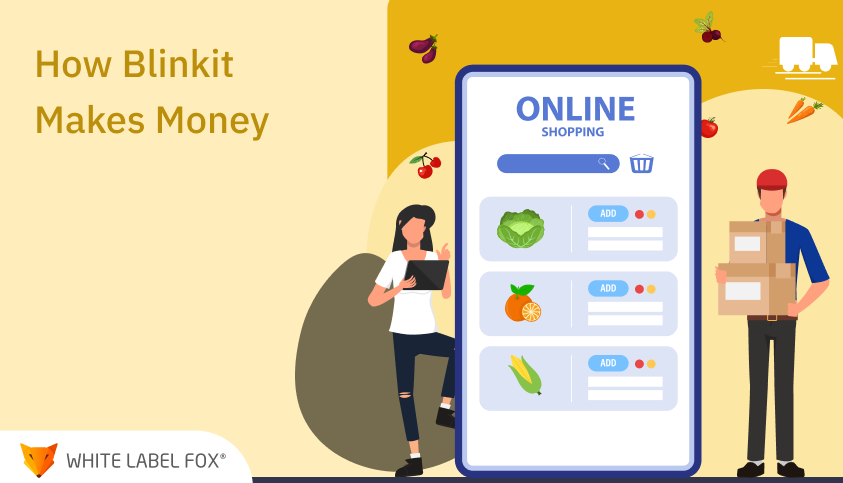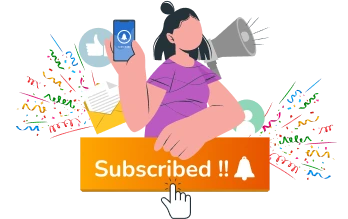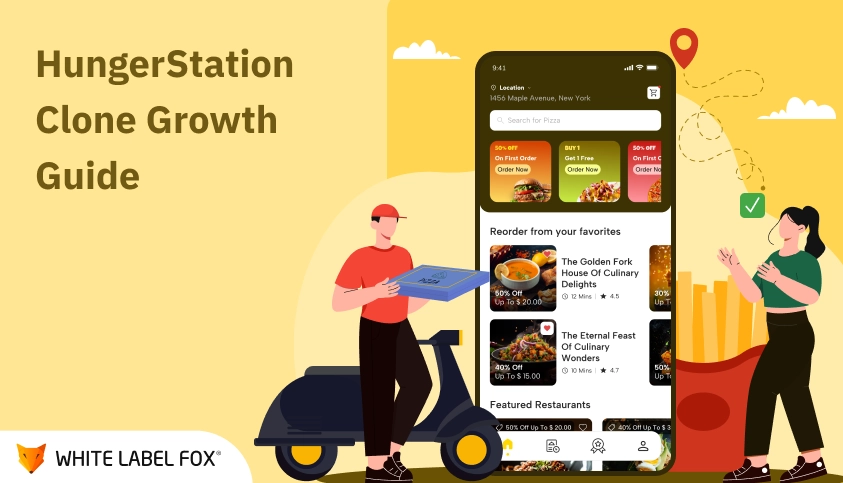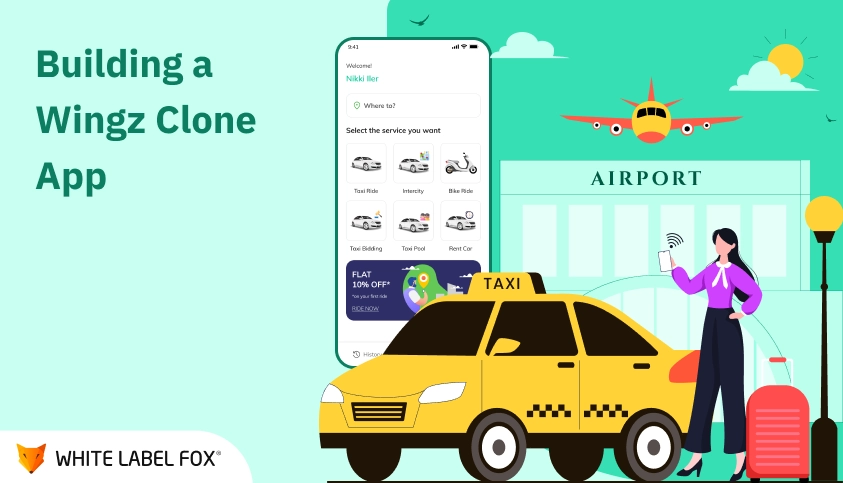Mobility has gained immense popularity, especially in food ordering and delivery platforms. With millennials turning online to order meals from local restaurants instead of traditional eating, the focus is shifting to hyperlocal online meal delivery. Talabat is an on-demand meal delivery giant that offers a vast range of limitless cuisines from restaurants. Want to know how the Talabat works? Read the whole article on a Talabat business model to know how it makes money.
From comprehensive options of restaurants, single-click payment, and limitless cuisine, food ordering and delivery apps have made life easier and faster. Instead of conveying amenities as straightforward service features, meal delivery apps convey convenience to every client at each level.
The online food delivery segment is incredibly competitive, with each competitor offering something new. Amid pandemic, the global online food delivery services are forecasted at US$42.7 Billion in the year 2020. The market is estimated to reach US$259.7 Billion by 2027, growing at 29.4% CAGR over the period 2020-2027.
Customers these days need everything at the click of a single button. This is a primary reason why online food delivery apps have become a part of our lives. With the emergence of online food ordering apps, food lovers can order their favorite food from the comfort of their sofas and receive immediate delivery right at their doorsteps.
Are You Planning To Develop A Food Delivery App Like Talabat ?
Learn More About Our Readymade Delivery Script.
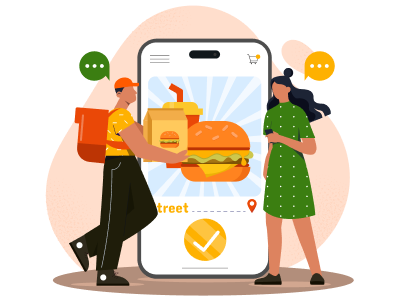
What is Talabat?
Talabat is an online food ordering platform founded in 2004 in Kuwait. As of 2021, Talabat operates in Saudi Arabia, Oman, Saudi Arabia, Oman, Bahrain, the United Arab Emirates, Iraq, Qatar, Jordan, and Egypt. Delivery Hero is the parent company of Talabat, which has raised 15 billion convertible bond sales and has become one of the most considerable food ordering companies in the Middle East.
Success History of Talabat to Dive into!
Founded by Khaled Al Otaibi and Abdulaziz Al Loughani in Kuwait, Talabat was started with the vision to make meal delivery a convenient experience for customers and restaurants. The name “Talabat” emanates from the Arabic language, which means “order.”
The online meal ordering platform has revolutionized the way of meal delivery in the MENA region. From the time of advancing to modern technology, the delivery giant has provided customers with fast and easy delivery, effective communication channels, and accurate tracking facilities.
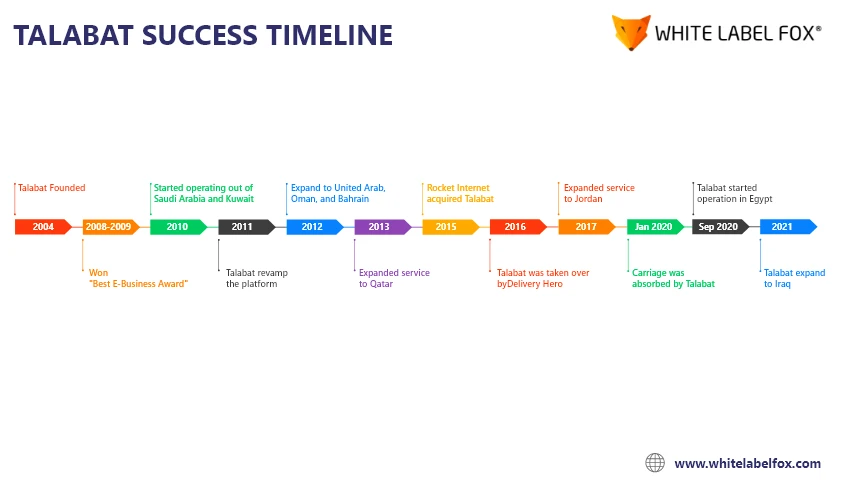
Zomato sells the UAE food delivery business to Delivery Hero for 172 million, forcing UberEats to close its operation in the region. Talabat also delivers groceries, and pharmaceuticals and has been venturing into eCommerce by providing deliveries to customers in 30 mins or less.
Talabat is a food and grocery delivery platform operating in the MENA region. The delivery giant offers its service in more than 7 countries, and as a business owner who wants to invest in a multi-million dollar industry, the perfect way is to start with delivering anything app that functions efficiently.
Talabat Business Model: Check How Talabat Works to Offer Amazing Experience?
Based on a hyperlocal business model, Talabat delivers services with a primary focus on the meal delivery sector. A Talabat business model comprises modern techniques that ensure a smooth purchase experience offered to customers. The company bridges the gap between food stores and customers.
Customers can use the website and app to order food or daily essentials. They can check the restaurant’s menu and choose their favorite dishes from a variety of options available—the general flow of how other on-demand hyperlocal services work is similar to the Talabat business model.
Value Proposition
Customers:
The main customers of Talabat are people who want to order ready-to-eat food. Talabat’s business model makes it easier for customers to get their favorite meal at their doorsteps. Customers who want to purchase essentials from grocery stores, eateries, and more can use this platform.
Customers can choose to pay using various modes of payment, including cash, credit/debit card, or any other online payment method. They can even track their order and check the estimated time of arrival. Once they receive an order, they can quickly provide feedback and ratings to the delivery person and restaurant.
Restaurant:
Restaurants who want to expand their business reach can register themselves on a feature-rich delivery platform. The easy flow of Talabat’s helps restaurants serve more customers across different regions, opening new doors of opportunity for them. It allows restaurants to get a higher reach and stand out from others in the market.
Delivery Partners:
Delivery agents who want to earn more can consider registering themself on Talabat’s platform. They can work in a flexible time slot and at their convenience. Delivery providers’ income is no longer limited to what the company pays them; they can even earn an additional amount from customers’ tips.

Revenue Model of Talabat: How Does This Delivery Giant Make Money?
Talabat has become a market leader globally. The company has found cost-effective ways to grow its customer base across the globe. Effective Talabat business model helped the company build a strong presence in the market, but do you know how the delivery giant makes money? No, then check the Talabat revenue model to find the answer.
Like all other food delivery businesses, Talabat relies on effective revenue streams like:
- Commissions;
- Delivery charges;
- Advertisement.
Let’s check each one in detail to know how Talabat makes money.
Commissions
Talabat charges 15 to 20% commission from restaurants on every order customers make using the platform. This helps them get exclusive business and decreases completion at the same time. The platform focuses on exclusivity, assisting restaurants to pay a 5 to 10% lower commission rate.
Delivery Charges
Talabat has no minimum order size, which helps customers get orders of all sizes. Delivery charge drops as the order size increases. The delivery charge for meal delivery is not fixed and depends on various factors such as the distance needed to be covered, order size, and more. The delivery rate is comparatively higher during peak hours, late-night delivery, etc.
Advertising Costs
Talabat mainly offers two types of advertising opportunities to food stores:
Banner Ads: Restaurants get more coverage by showing their ads on the banner.
Priority Listing: In this type, restaurants can get a chance to appear on top listings.
Talabat follows an impressive revenue model to generate great revenue. You can implement the same strategy to generate money for your food ordering and delivery business.
Must-Include Features to Include in App Like Talabat
There are lots of features and modules that make an app like Talabat functional and working. These modules fall into the following category, these include:
- User app/ panel
- Restaurant app/ panel
- Delivery provider app
- Admin panel
User App/Panel
Customers can use apps and panels to register, search restaurants, browse menus, and more. Some of the exclusive features you can consider using in the customer app and panel are:
- Filter & sort
- Add Ingredients
- Track Order
- Easy payment
- Schedule order
- Customer takeaway
- Add favorite
- Get Notifications
Delivery Partner App
Easy-to-use delivery provider app has many features that make it functional. These include:
- Quick Login
- Manage Request
- Profile Status
- Manage Document
- Earning History
- In-App Map Navigation
- Manage Multiple Deliveries
- Customer Feedback
Restaurant App
Advanced features included in the restaurant app help them to manage everything efficiently. The list of features you must include is as under:
- Manage Order Status
- Order History
- Manage Profile
- Store Settings
- View Order Details
- View feedback
Admin Panel
Admin panel has exclusive features that make it easier for the admin to have complete control over business activities. The admin panel has features as follows:
- Manage Food Categories
- Manage Promo Code
- Pickup/Take Away Orders
- Set Surge Price
- Contact Less Delivery
There are lots of features that you can consider including in your Talabat-like app. Have a look at the complete features list to know which you can consider including in your food delivery app
Why Invest in Talabat Like App Development?
If you are a solo entrepreneur, business owner, or any other, investing in Talabat like app development can lead to a lot more opportunities. Check a few of the top reasons why you must invest in food delivery app development:
- Guaranteed Growth
- Easy to Get Investment
- Endless Possibilities
- Seamlessly Target Gen Z and Millennials
- Helps to Operate Customer-Friendly Business
- Global Opportunities
Cost of Developing an App Like Talabat: Find it Out Here!
If you are looking for a perfect figure for developing an app like Talabat, then you will fail to get it. The Talabat-like app development cost depends on many factors:
- App type and size
- Device and platform selection
- Features and functionality included
- Platform complexity
There are many more factors that affect an app similar to Talabat’s development cost. If you want to launch your delivery business online, get in touch with us at [email protected] and get a quote right away. White Label Fox promises you a Talabat-like app with all essential features to help you grow your business exponentially at a pocket-friendly price.
Ending Note
Talabat’s business model helped the company go a long way and gain popularity as a business giant in the market. It is the most prominent delivery leader in the Middle East, where the meal delivery sector is growing faster. There is plenty of room for food delivery businesses to grow in different regions and earn millions of dollars in sales.
Customers’ growing demand for hot meal delivery has opened new opportunities for delivery brands. Many delivery brands are taking the support of app development companies to launch their business online. If you’re also looking to join the competitive market, then White Label Fox can help you with it.
Frequently Ask Questions
Talabat is an online food delivery platform that operates in several
countries in the Middle East, providing users with a convenient way
to
order food from a wide range of local restaurants and have it
delivered
to their location. The app allows customers to browse restaurants,
place
orders, and track their delivery in real-time, all through their
mobile
devices.
Talabat generates revenue through various streams:
- Commission from Restaurants: Talabat charges
restaurants
a commission fee, which typically ranges from 10% to 30%,
for
each order made through the platform.
- Delivery Fees: Customers are charged a delivery fee,
which can vary depending on the distance, demand, and
location.
- Subscription Services: Talabat may offer premium
subscriptions (like Talabat Pro) that provide benefits such
as
free delivery and discounts on orders.
- Advertising Fees: Restaurants can pay Talabat to be
featured or promoted within the app, increasing their
visibility.
- Commission from Restaurants: Talabat charges restaurants a commission fee, which typically ranges from 10% to 30%, for each order made through the platform.
- Delivery Fees: Customers are charged a delivery fee, which can vary depending on the distance, demand, and location.
- Subscription Services: Talabat may offer premium subscriptions (like Talabat Pro) that provide benefits such as free delivery and discounts on orders.
- Advertising Fees: Restaurants can pay Talabat to be featured or promoted within the app, increasing their visibility.
The cost of building an app like Talabat can vary widely depending
on
factors like features, design complexity, and development location.
Here's an approximate breakdown:
- Basic App Development: Around $20,000 to $40,000 for
a
minimum viable product (MVP) with essential features.
- Advanced Features: If you include advanced features
such
as real-time tracking, multiple payment gateways, loyalty
programs, and AI-based recommendations, the cost could range
from $50,000 to $100,000 or more.
- Maintenance & Updates: An annual maintenance cost of
15-20% of the total development cost should also be
considered.
-
Marketing and Launch: Budgeting for marketing, app
store
optimization, and brand promotion is also crucial, which
could
add another $10,000 to $20,000.
- Basic App Development: Around $20,000 to $40,000 for a minimum viable product (MVP) with essential features.
- Advanced Features: If you include advanced features such as real-time tracking, multiple payment gateways, loyalty programs, and AI-based recommendations, the cost could range from $50,000 to $100,000 or more.
- Maintenance & Updates: An annual maintenance cost of 15-20% of the total development cost should also be considered.
- Marketing and Launch: Budgeting for marketing, app store optimization, and brand promotion is also crucial, which could add another $10,000 to $20,000.
To build an app like Talabat, follow these steps:
- Market Research: Understand the market needs,
competition, and customer preferences.
- Define Features: List the must-have features (e.g.,
user
profiles, restaurant listings, payment options, real-time
tracking).
- Choose the Technology Stack: Select the platform
(iOS/Android) and development tools (React Native, Flutter,
etc.).
- App Design: Focus on a clean, user-friendly interface
with intuitive navigation.
- Development: Hire a team of experienced developers to
build the app, ensuring both front-end and back-end
development
are robust.
- Testing: Test the app thoroughly for performance,
security, and usability before launch.
- Launch and Marketing: Launch the app on app stores
and
implement a solid marketing strategy to attract users and
restaurants.
- Continuous Improvement: Gather user feedback and
continuously enhance the app by adding new features and
improvements.
- Market Research: Understand the market needs, competition, and customer preferences.
- Define Features: List the must-have features (e.g., user profiles, restaurant listings, payment options, real-time tracking).
- Choose the Technology Stack: Select the platform (iOS/Android) and development tools (React Native, Flutter, etc.).
- App Design: Focus on a clean, user-friendly interface with intuitive navigation.
- Development: Hire a team of experienced developers to build the app, ensuring both front-end and back-end development are robust.
- Testing: Test the app thoroughly for performance, security, and usability before launch.
- Launch and Marketing: Launch the app on app stores and implement a solid marketing strategy to attract users and restaurants.
- Continuous Improvement: Gather user feedback and continuously enhance the app by adding new features and improvements.
To build an app like Talabat, you need a technology stack that can
handle a high volume of users, support real-time features, and
provide
seamless user experience. Here’s a potential stack:
- Frontend Development: React Native, Flutter, or Swift
(iOS) and Kotlin (Android).
- Backend Development: Node.js, Django, or Ruby on
Rails
for managing the server-side.
- Database: MongoDB, PostgreSQL, or MySQL for storing
user
data, orders, and restaurant details.
- Real-Time Tracking: WebSockets or Firebase for
real-time
tracking of deliveries.
- Payment Integration: Stripe, PayPal, or Razorpay for
handling transactions.
- Push Notifications: Firebase Cloud Messaging or
OneSignal
for real-time alerts.
- Frontend Development: React Native, Flutter, or Swift (iOS) and Kotlin (Android).
- Backend Development: Node.js, Django, or Ruby on Rails for managing the server-side.
- Database: MongoDB, PostgreSQL, or MySQL for storing user data, orders, and restaurant details.
- Real-Time Tracking: WebSockets or Firebase for real-time tracking of deliveries.
- Payment Integration: Stripe, PayPal, or Razorpay for handling transactions.
- Push Notifications: Firebase Cloud Messaging or OneSignal for real-time alerts.
Talabat ensures smooth delivery operations through:
- Logistics Management: A robust backend system that
manages order allocation and dispatching drivers based on
proximity and availability.
- Delivery Partner Network: A large network of delivery
drivers or couriers who can pick up and deliver orders
quickly.
- Real-Time GPS Tracking: Users can track their
deliveries
in real time, which helps improve the transparency and
reliability of the service.
- Surge Pricing: During peak times, the platform may
apply
surge pricing to incentivize drivers to take on more
deliveries.
- Customer Support: A dedicated support team to resolve
any
delivery-related issues promptly.
- Logistics Management: A robust backend system that manages order allocation and dispatching drivers based on proximity and availability.
- Delivery Partner Network: A large network of delivery drivers or couriers who can pick up and deliver orders quickly.
- Real-Time GPS Tracking: Users can track their deliveries in real time, which helps improve the transparency and reliability of the service.
- Surge Pricing: During peak times, the platform may apply surge pricing to incentivize drivers to take on more deliveries.
- Customer Support: A dedicated support team to resolve any delivery-related issues promptly.
Some of the main challenges include:
- High Competition: The food delivery market is highly
competitive, with numerous players like Uber Eats, Zomato,
and
DoorDash.
- Logistical Challenges: Coordinating a seamless
delivery
process,
ensuring fast deliveries, and managing a large fleet of
couriers
can be difficult.
- Customer Retention: Keeping users engaged with the
app
and
ensuring they continue to use the service regularly can be a
challenge.
- Regulatory Compliance: Navigating local regulations
regarding
food delivery, driver status (independent contractors), and
payment systems.
- Scalability: Ensuring the app can handle a growing
number
of
users, restaurants, and deliveries as the business expands.
- High Competition: The food delivery market is highly competitive, with numerous players like Uber Eats, Zomato, and DoorDash.
- Logistical Challenges: Coordinating a seamless delivery process, ensuring fast deliveries, and managing a large fleet of couriers can be difficult.
- Customer Retention: Keeping users engaged with the app and ensuring they continue to use the service regularly can be a challenge.
- Regulatory Compliance: Navigating local regulations regarding food delivery, driver status (independent contractors), and payment systems.
- Scalability: Ensuring the app can handle a growing number of users, restaurants, and deliveries as the business expands.
Scaling an app like Talabat involves:
- Expanding Restaurant Partnerships: Continuously
onboard
new restaurants to diversify your offerings and attract more
customers.
- Improving Delivery Logistics: Invest in better
logistics
systems, advanced routing algorithms, and AI for faster
deliveries.
- Geographical Expansion: Gradually expand to new
cities
and regions to grow your user base.
- Marketing and Promotions: Launch targeted advertising
campaigns, discount offers, and loyalty programs to retain
users
and attract new ones.
- Technology Upgrades: Continuously upgrade your
backend
infrastructure to handle growing traffic and optimize app
performance.
- Expanding Restaurant Partnerships: Continuously onboard new restaurants to diversify your offerings and attract more customers.
- Improving Delivery Logistics: Invest in better logistics systems, advanced routing algorithms, and AI for faster deliveries.
- Geographical Expansion: Gradually expand to new cities and regions to grow your user base.
- Marketing and Promotions: Launch targeted advertising campaigns, discount offers, and loyalty programs to retain users and attract new ones.
- Technology Upgrades: Continuously upgrade your backend infrastructure to handle growing traffic and optimize app performance.
Building an app like Talabat can provide several benefits:
- Increased Reach: Access to a larger audience by
offering
food delivery services via a convenient app.
- Streamlined Operations: Centralized management of
orders,
payments, and deliveries, making the process more efficient.
- Revenue Growth: Multiple revenue streams from
delivery
fees, commissions, and subscription models.
- Customer Loyalty: Features like personalized offers,
discounts, and loyalty programs can increase customer
retention.
- Market Differentiation: Offering unique features or
services can help differentiate your app from competitors in
a
saturated market.
- Increased Reach: Access to a larger audience by offering food delivery services via a convenient app.
- Streamlined Operations: Centralized management of orders, payments, and deliveries, making the process more efficient.
- Revenue Growth: Multiple revenue streams from delivery fees, commissions, and subscription models.
- Customer Loyalty: Features like personalized offers, discounts, and loyalty programs can increase customer retention.
- Market Differentiation: Offering unique features or services can help differentiate your app from competitors in a saturated market.

